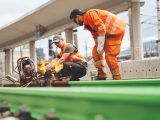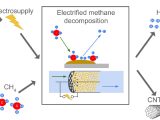
Hydrogen Fuel Cell: DGIST’s Platinum-Calcium Alloy Catalyst Exceeds DOE 2025 Targets
August 4, 2025Meet the Catalyst
DGIST researchers led by Professor Jong-sung Yu have developed a groundbreaking platinum-calcium alloy core-shell nanoparticle catalyst that shatters the U.S. DOE’s 2025 targets for hydrogen fuel cells. Using a precise liquid-phase synthesis on carbon supports, they wrapped a calcium-rich core in a platinum shell—boosting fuel cell chemistry to a whole new level.
Performance Highlights
- Over 20% boost in mass activity and durability versus DOE’s targets
- Up to 40% cut in platinum usage, driving down material costs
- Maintains more than 90% of its performance after 30,000 stress cycles
From Lab to Real World
With help from theorists at the University of Duisburg-Essen, they confirmed the alloy’s superior binding energies. Published in Small and backed by the Korea’s National Research Foundation, this breakthrough could trim fuel cell system costs by up to 20%, bringing cost-competitive hydrogen vehicles and stationary power units within sight—and giving fuel cell technology a serious edge.
Next Steps
Next up: scaling production, securing calcium supply chains, and fitting this catalyst into commercial stacks. Hit those milestones, and we’ll kickstart stronger hydrogen infrastructure—powering a future driven by green hydrogen and sustainable energy.
Get access to the paper here



 With over 15 years of reporting hydrogen news, we are your premier source for the latest updates and insights in hydrogen and renewable energy.
With over 15 years of reporting hydrogen news, we are your premier source for the latest updates and insights in hydrogen and renewable energy.
Why can we not just convert water in a tank to produce hydrogen to run engines instead of all the Hassel of hydrogen fuel cell with all the cost with production of the gas